Ever feel like your brain is running on 37 tabs, Spotify is playing in the background, Slack is pinging every two minutes, and you can’t even remember where you put your phone… which is probably in your hand?
Yeah, welcome to modern life.
That’s why meditation apps have become wildly popular; they’re like the pause button we never knew we needed. Open the app, breathe for a few minutes, and suddenly it feels like someone finally closed all those mental tabs.
In fact, according to a survey by the NCCIH, out of seven complementary health practices studied, meditation came out on top as the most popular. No surprise there; people are clearly craving calm.
Here’s the fun part: you don’t just have to use these apps; you can actually build one yourself. Imagine creating the next Calm or Headspace, an app that helps people slow down, recharge, and maybe even sleep better at night.
And yes, it can also turn into a pretty solid business.
In this blog, we’ll break down the essentials, the must-have features, how much it costs to build, and the different ways you can actually make money from a meditation app.
Simple, clear, and practical, so you walk away with a full picture of what it takes.
Table of Contents
Why Is a Meditation App a Must-Have Today?
Modern life sometimes feels like trying to listen to three podcasts, scroll TikTok, and answer emails all at once. Our brains weren’t built for this kind of constant noise, and that’s where meditation apps step in.
Meditation may have started with monks in the mountains and yogis in retreat centers, but today it’s found its way into backpacks, office desks, and smartphone screens. It’s something busy parents, college students, and professionals can lean on whenever life feels overwhelming.
They’ve become daily companions for people who need a reset.
Here are a few reasons meditation apps are booming right now:
- Mental Health Matters
Conversations around stress, burnout, and anxiety are no longer hidden. People now see meditation apps as simple digital tools to support their mental well-being. - Remote Work Changed Routines
Back-to-back Zoom calls created the perfect moment for mini-meditations. A quick 5–10-minute session during the day feels more doable than an hour-long class. - Wellness Is Growing Strong
The wellness industry is massive, and meditation apps are riding that wave. With billions already flowing into the market, demand keeps growing every year. - Easy Access for Everyone
No yoga studio or expensive retreat is needed. Anyone with a phone can tap a button and start practicing mindfulness instantly.
In short, building a meditation app today is like opening a smoothie bar in a health-conscious neighborhood; the demand is there, you just need to serve it right.
So now that you know why people need these apps, let’s talk about what makes a meditation app actually work: the features you’ll want to include.
Great app ideas fail when execution gets messy. Plan your meditation app step-by-step so every feature works as intended and users keep coming back day after day.
What Are The Key Features Every Meditation App Needs?
So, you’ve decided you want to build a meditation app, but what exactly makes people fall in love with one?
Think of it like making the perfect cup of coffee; it’s not just the beans, it’s the warmth, the aroma, and the little details that make someone come back every morning. A great meditation app works the same way: it helps users feel calm, focused, and motivated to come back day after day.
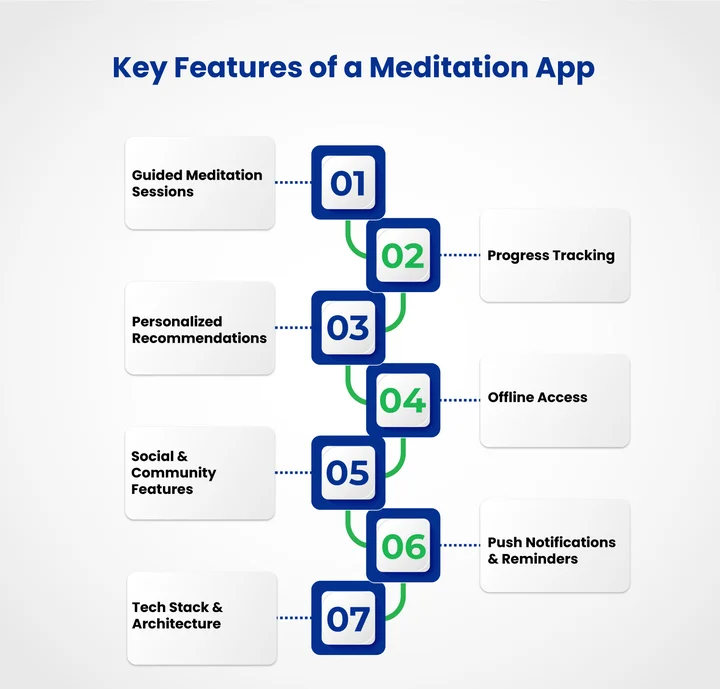
These are the key elements that turn a simple app into a daily habit:
- Guided Meditation Sessions
This is the bread and butter. People love apps that offer guided sessions for stress relief, focus, or sleep. Including guided meditation app features like voice guidance, soothing music, or ambient sounds gives your app that polished, professional feel. - Progress Tracking
Everyone loves seeing their streaks, achievements, or total hours meditated. It turns meditation into a tiny daily win and keeps users coming back for more. - Personalized Recommendations
Imagine an app that knows you need a 5-minute breathing break after lunch or a 10-minute sleep session before bed. Personalized suggestions make your app feel thoughtful, human, and just plain helpful. - Offline Access
Not everyone has internet access 24/7. Letting users download sessions ensures they can meditate anytime, anywhere: on a plane, in a park, or even hiding in a quiet corner of the house. - Social & Community Features
People love sharing victories and challenges. Adding a feature where users can connect, join challenges, or celebrate streaks helps with engagement and user retention strategies in a meditation app. - Push Notifications & Reminders
Gentle nudges help users stay consistent without feeling nagged. Think of it as a friendly tap on the shoulder:
“Hey, time to breathe.” - Tech Stack & Architecture
Behind every smooth meditation app is a solid tech stack for meditation apps. You might go with React Native, Flutter, or native iOS/Android, but whichever path you choose, the backend meditation app architecture has to support things like audio streaming, user accounts, and subscription management without hiccups.
All these features sound great, right?
But at this point, you’re probably wondering the real question: what’s the price tag for building a meditation app like this?
To give you a clear picture, let’s look at the development costs for a meditation app.
How Much Does It Cost to Build a Meditation App?
So, features sound amazing on paper, but let’s be real, turning those ideas into a working app takes time, talent, and yes, money. The meditation app development cost really depends on how ambitious you want to be, kind of like ordering at a restaurant: a simple meal will fill you up, but a three-course dinner with dessert and wine will cost a whole lot more.
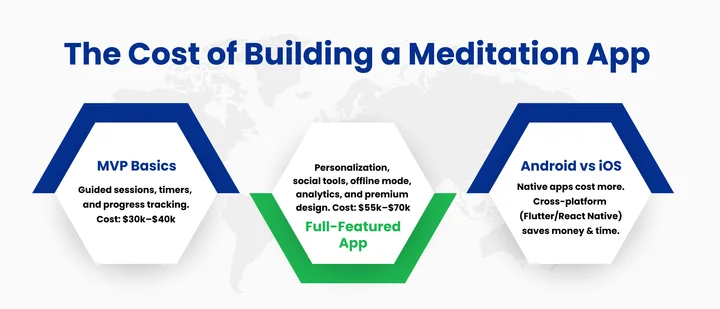
Now, let’s take a closer look at what building an app really costs:
- MVP Meditation App Features (The Basics)
If you’re just testing the waters, an MVP is the way to go. Think essentials only: guided sessions, timers, and progress tracking. Building this type of app in 2025 usually costs around $30,000–$40,000. It’s the leanest, quickest path to launch and see how people respond. - Full-Featured Apps (All the Extras)
Want something closer to Calm or Headspace? Adding personalization, social features, offline mode, advanced analytics, and sleek design will raise the bill. A full-featured meditation app typically runs between $55,000–$70,000 in today’s market. - Android vs. iOS Development Costs
Here’s the classic debate: should you build for Android or iOS first? The cost to build a meditation on Android vs. iOS can vary, but developing two separate native apps usually costs more. Cross-platform options like Flutter or React Native can help you save money and time.
Pro tip: Don’t try to build the “perfect” version from day one. Start with an MVP that covers the essentials, then use real user feedback to guide your next upgrades. It’s faster, cheaper, and way smarter than guessing what people want.
Step-by-Step Meditation App Development Guide
Okay, so you’ve wrapped your head around the meditation app development cost. But cost is only half the story.
How do you actually go from a “great idea” to a working app that people can download and love?
That’s where the meditation app development process comes in.
Think of it like cooking: you can’t just toss random ingredients in a pot and hope it turns out delicious. You follow a recipe, step by step, until the dish is ready. Building a meditation app works the same way.
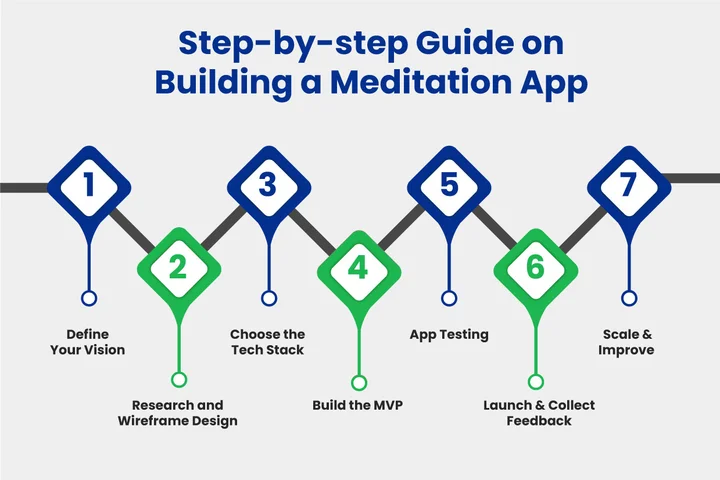
Here’s the breakdown:
Step 1: Define Your Vision
Before a single line of code gets written, you need clarity.
Who’s your audience?
Stressed-out professionals? College students? Busy parents?
Your answers will shape the MVP meditation app features you start with.
Step 2: Research & Wireframing
This is the sketching phase, literally. Designers create wireframes (like blueprints) for your app so you can see how it will look and flow. It’s cheaper and easier to tweak at this stage than after coding starts.
Step 3: Choose the Tech Stack
Here’s where you decide the tech stack for meditation app development. Do you go native (iOS or Android) or cross-platform (Flutter, React Native)? This choice affects both cost and performance.
Step 4: Build the MVP
Remember: start simple. Launch with only the must-have meditation app features, guided sessions, a timer, and progress tracking. The MVP lets you test the waters and gather feedback without draining your wallet.
Step 5: Test
Bugs are like weeds in a garden; ignore them and they’ll take over. Testing ensures your mindfulness app development is smooth, reliable, and actually enjoyable for users.
Step 6: Launch & Collect Feedback
This is the fun part: going live!
But it’s not “set it and forget it.” Listen to your users. Are they asking for sleep sounds? Social features? Offline mode? Their feedback is gold for your next update.
Step 7: Scale & Improve
Once your MVP proves itself, you can start layering on advanced features: personalization, AI-driven recommendations, or a full meditation app monetization model. This is where your app shifts from “just another wellness tool” to something people actually stick with.
At this point, you know the guide to building a meditation app step by step. But here’s the kicker: even the best app won’t survive unless it makes money.
So let’s talk about the fun (and practical) part: how to monetize a meditation app so it supports your business.
How Do You Monetize a Meditation App?
Alright, so you’ve built your shiny new meditation app. It’s got the features, it works smoothly, and people are starting to use it.
But here’s the million-dollar question: how do you actually make money from it?
Think of monetization as choosing your coffee order. Some people are fine with a basic drip (free with ads), while others splurge on oat milk lattes with extra foam (premium subscriptions). The same idea applies to your app.
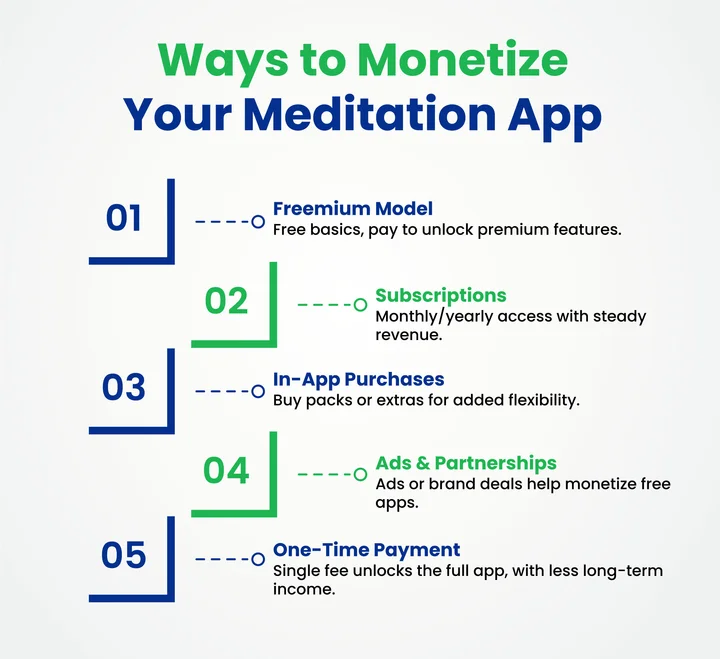
Now, let’s break down the ways your meditation app can earn:
- Freemium Model
This is the try-before-you-buy option. Users get access to basic features for free (like a few guided meditations), but premium features (like advanced courses, offline access, or sleep sounds) are behind a paywall. Apps like Calm and Headspace nailed this model. - Subscriptions
The gold standard in wellness apps. Monthly or yearly subscriptions give users full access. It’s a predictable, steady income for you, and users love knowing they’re getting everything without ads. - In-App Purchases
Think of these as à la carte extras. Maybe someone wants to buy a specific meditation pack (like “7 Days to Stress Relief”) or exclusive content. This adds flexibility and boosts revenue without forcing everyone into a subscription. - Ads & Partnerships
Not everyone loves ads, but if your app is free, they can help pay the bills. Partnering with wellness brands (like tea companies, yoga studios, or sleep product makers) can also open creative revenue streams. - One-Time Payment
Less common today, but still possible. Charge users once to unlock the full app. It’s simple, but it usually brings in less long-term revenue compared to subscriptions.
Closing Notes: Building a Meditation App That Lasts
A great meditation app blends useful features, smart development, and a thoughtful business model. It’s mainly about creating something that feels like a daily reset button for your users. When you design with real people in mind and work alongside reliable mobile app development services, every feature feels more intentional and impactful.
If you keep things simple at the start, grow with feedback, and choose the right meditation app monetization model, you’ll be setting yourself up for long-term success. Do that, and you’re not just launching an app, you’re building something people will return to every single day.
And who knows?
The app you start today might just be the calm someone else has been searching for tomorrow!
Frequently Asked Questions (FAQs)
2. What Are The Best Features For A Meditation App in 2025?
The most popular meditation app features include guided meditation sessions, progress tracking, personalized recommendations, offline access, push notifications, and community features. These are the basics to keep users engaged.
3. How Do You Monetize A Meditation App?
The top options include freemium + subscription, in-app purchases, ads, and partnerships. A meditation app monetization model comparison shows subscriptions usually bring the most stable revenue.
4. How Long Does The Meditation App Development Process Take?
Typically, an MVP version can take 3–5 months, while a full-featured app may take 6–12 months, depending on complexity, the chosen tech stack for the meditation app, and development resources.
5. Why Is User Retention Important For Meditation Apps?
User retention strategies in a meditation app, like streaks, reminders, and community features, are key to keeping users engaged long-term. Without them, people download, use once, and never return.
Still burning cash on trial-and-error app development? Avoid wasted effort and costs by building a clear plan that gets your app right from the start.
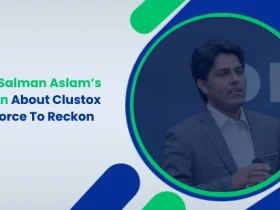
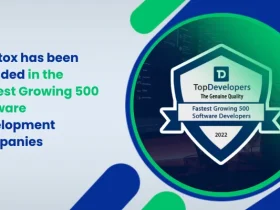
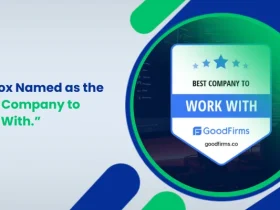
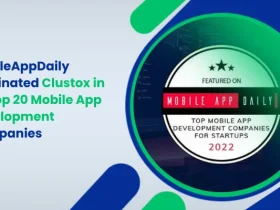
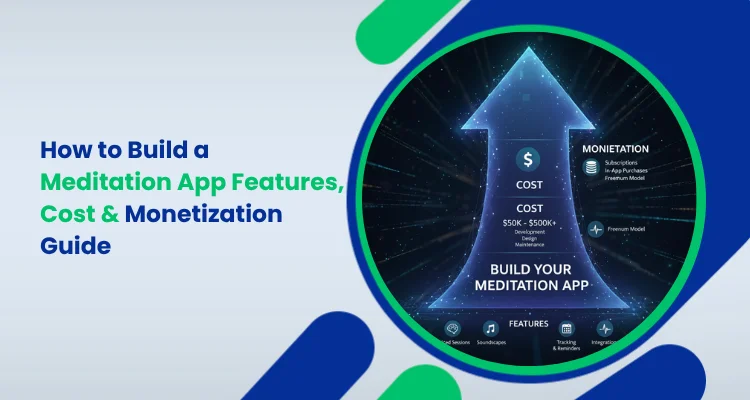
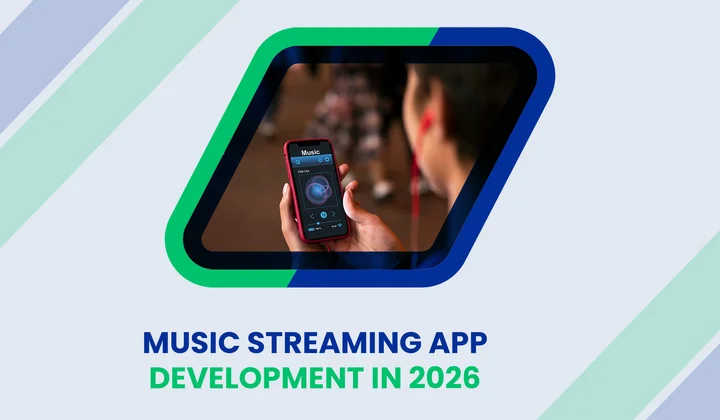
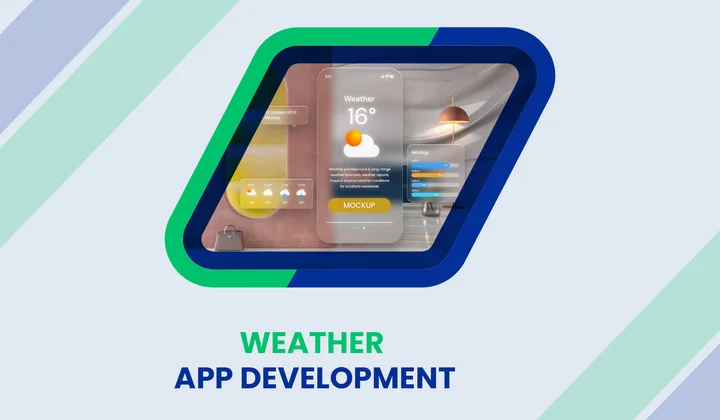

Share your thoughts about this blog!